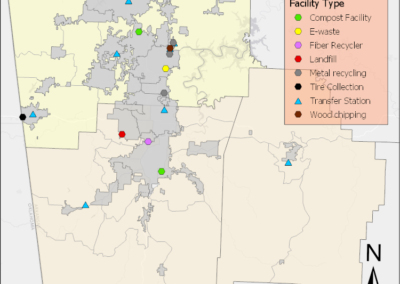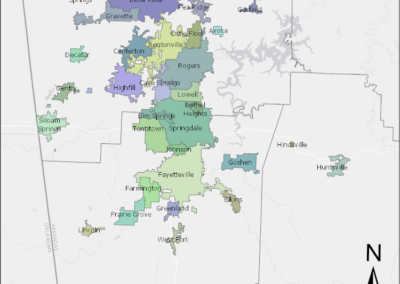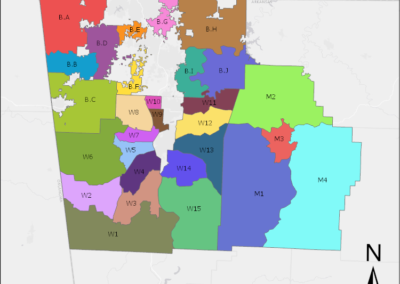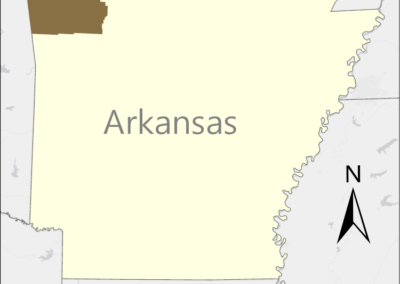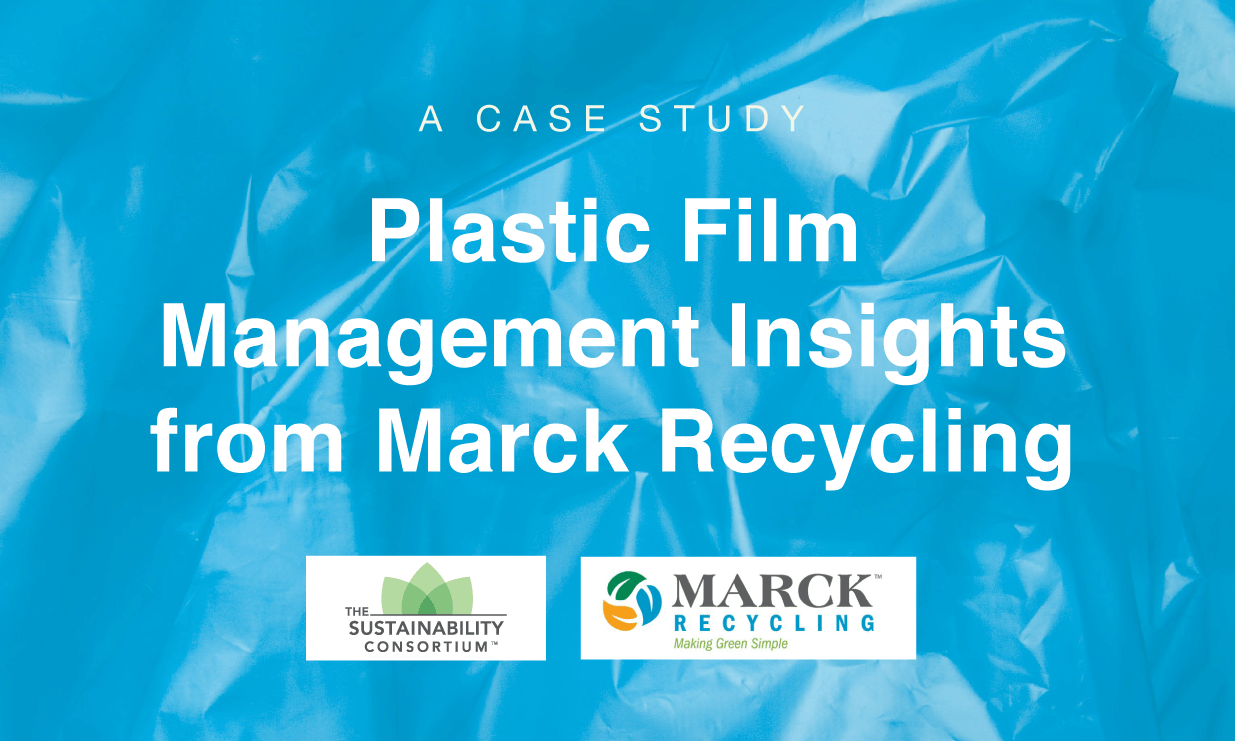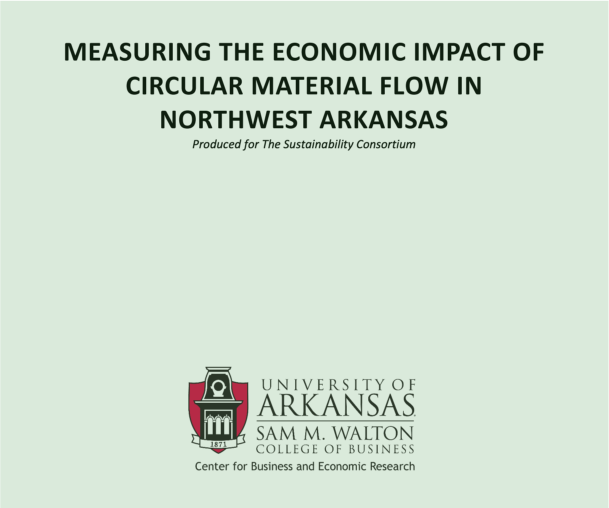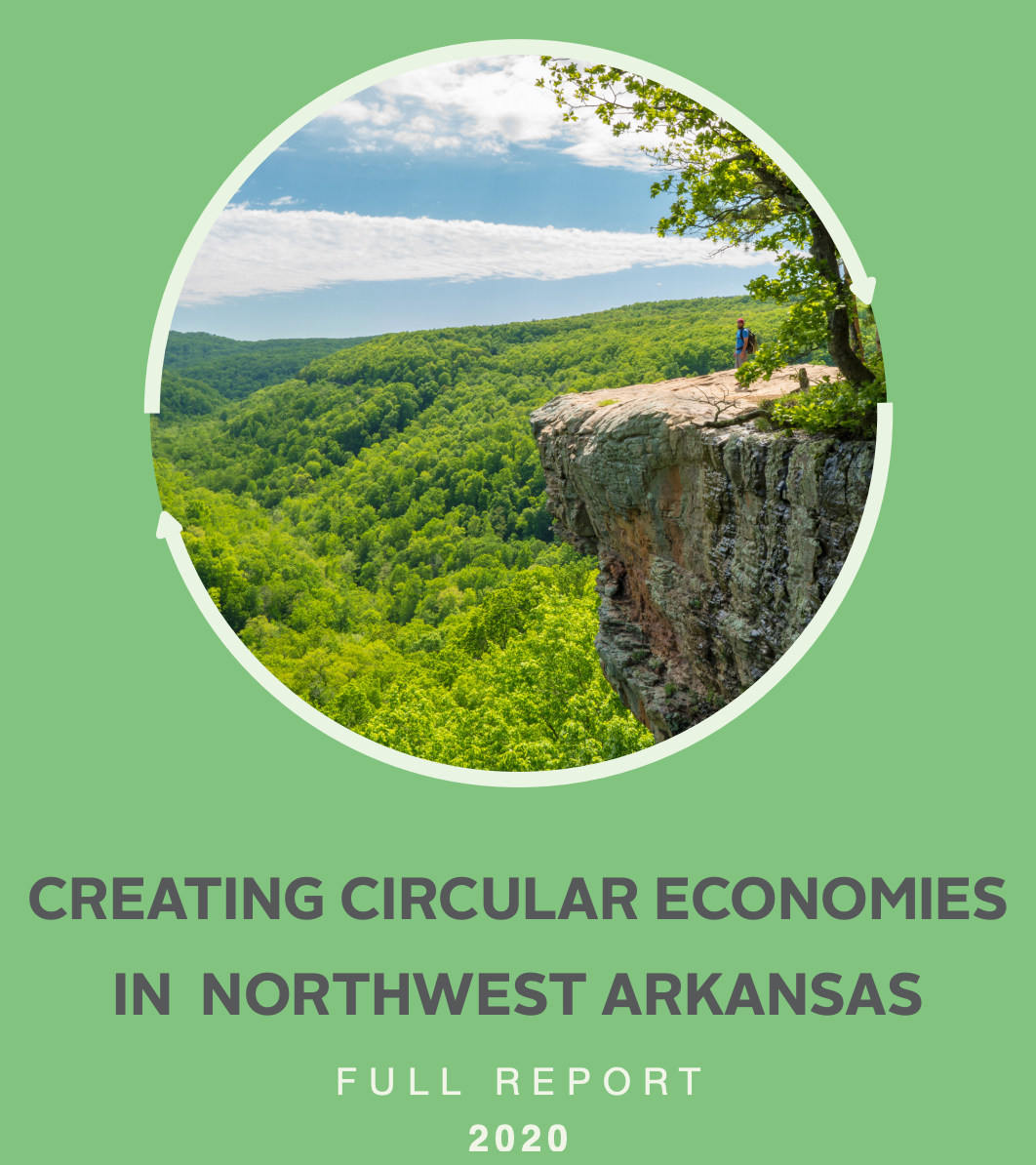NORTHWEST ARKANSAS CIRCULAR ECONOMY DEVELOPMENT
ABOUT
In 2015, Americans produced 262.4 million tons of municipal solid waste, which equates to 4.48 pounds per person per day. Of this waste, 67.8 million tons were recycled. But once you put a plastic bottle in a recycling bin – where does it go How does it get sorted and by whom? Can recyclable materials drive economic development? TSC is partnering with the Northwest Arkansas Council to develop a roadmap for economic development in the region based on the circular movement of recycled and recovered materials.
NORTHWEST ARKANSAS (NWA) REGIONAL BREAKDOWN
2,673
SQ. MILES
2
SOLID WASTE DISTRICTS
3
COUNTIES
29
RURAL DISTRICTS
35
MUNICIPALITIES
OBJECTIVES
The complexity of Northwest Arkansas provides a rich environment to explore how to create a circular economy that meets the needs of such a diverse region. Understanding how to leverage circularity for economic development here will provide valuable insights for creating similar systems elsewhere.
Project Goals:
The complexity of Northwest Arkansas provides a rich environment to explore how to create a circular economy that meets the needs of such a diverse region. Understanding how to leverage circularity for economic development here will provide valuable insights for creating similar systems elsewhere.
Develop a map of the existing Northwest Arkansas waste management system to identify:
- Volume and composition of existing recycling streams from municipal sources;
- Existing infrastructure (e.g., facilities, processors, end-markets) and potential gaps;
- Potential for incorporating commercial material streams using plastic film (single-layer wraps and bags) as a case study;
Produce a landscape analysis of programs in regions similar to...
…Northwest Arkansas to identify best practices and potential opportunities and pitfalls for the region when considering instituting circular economy models.
Identify potential technologies or...
…organizations that could contribute to a regional transition to a circular economy model.
Present a set of possible scenarios to...
…regional stakeholders and collectively develop a roadmap for implementing a more circular economy.
MATERIALS BREAKDOWN
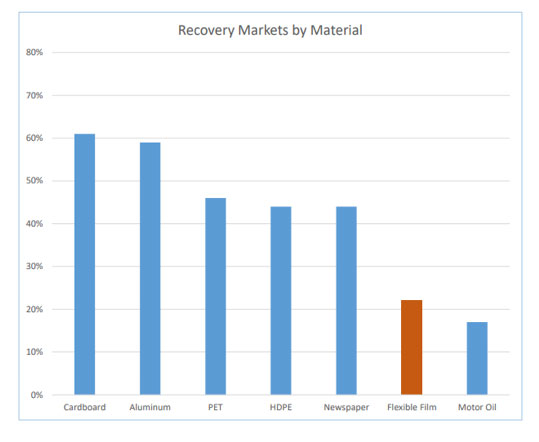
-
Cardboard 61%
-
Aluminum 59%
-
PET 46%
-
HDPE 44%
-
Newspaper 44%
-
Flexible Film 22%
-
Motor Oil 17%
DOWNLOAD THE REPORTS
Those interested in learning more about the effort can contact:

Sarah Lewis
Senior Director, Innovation
The Sustainability Consortium

